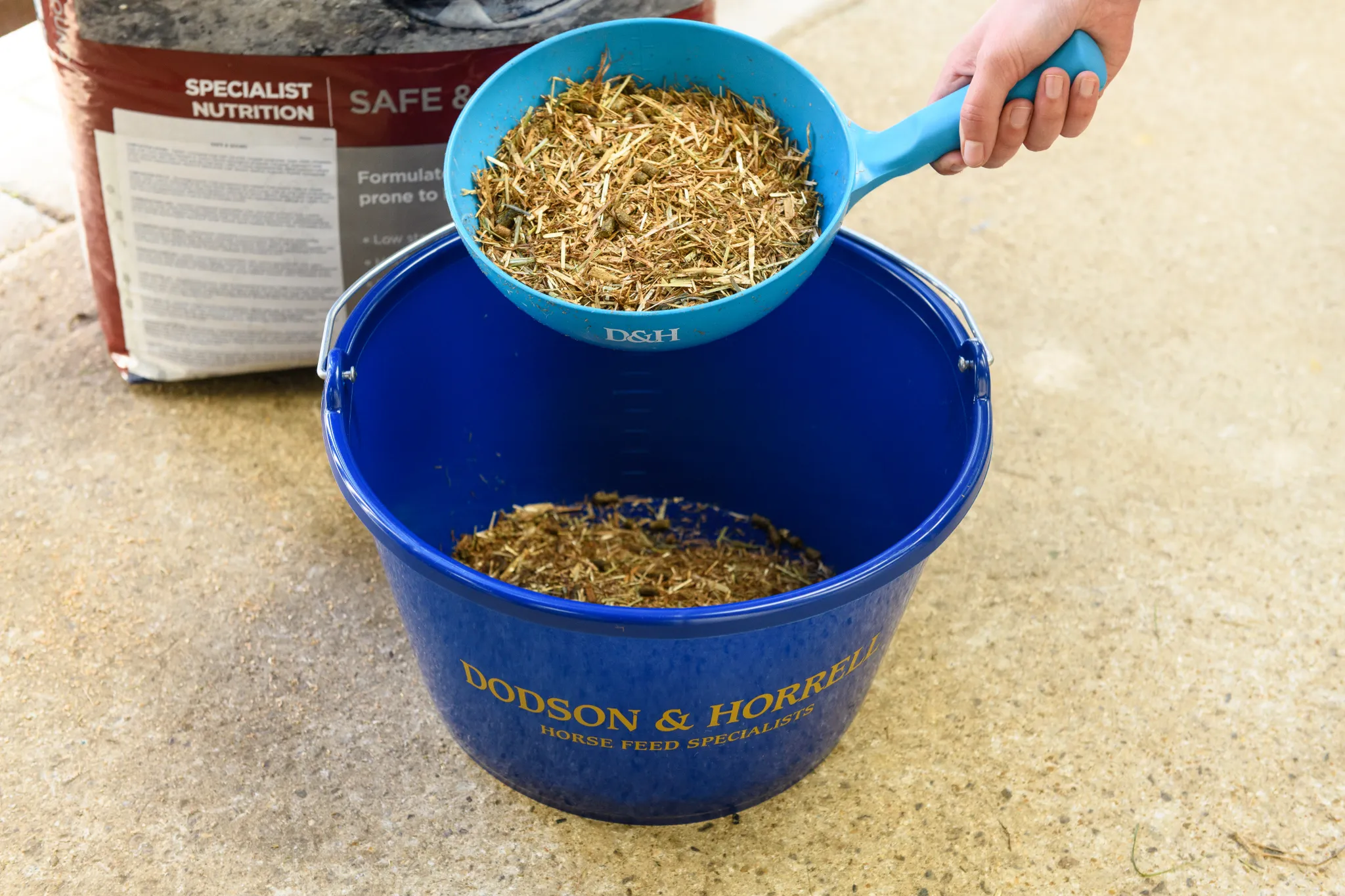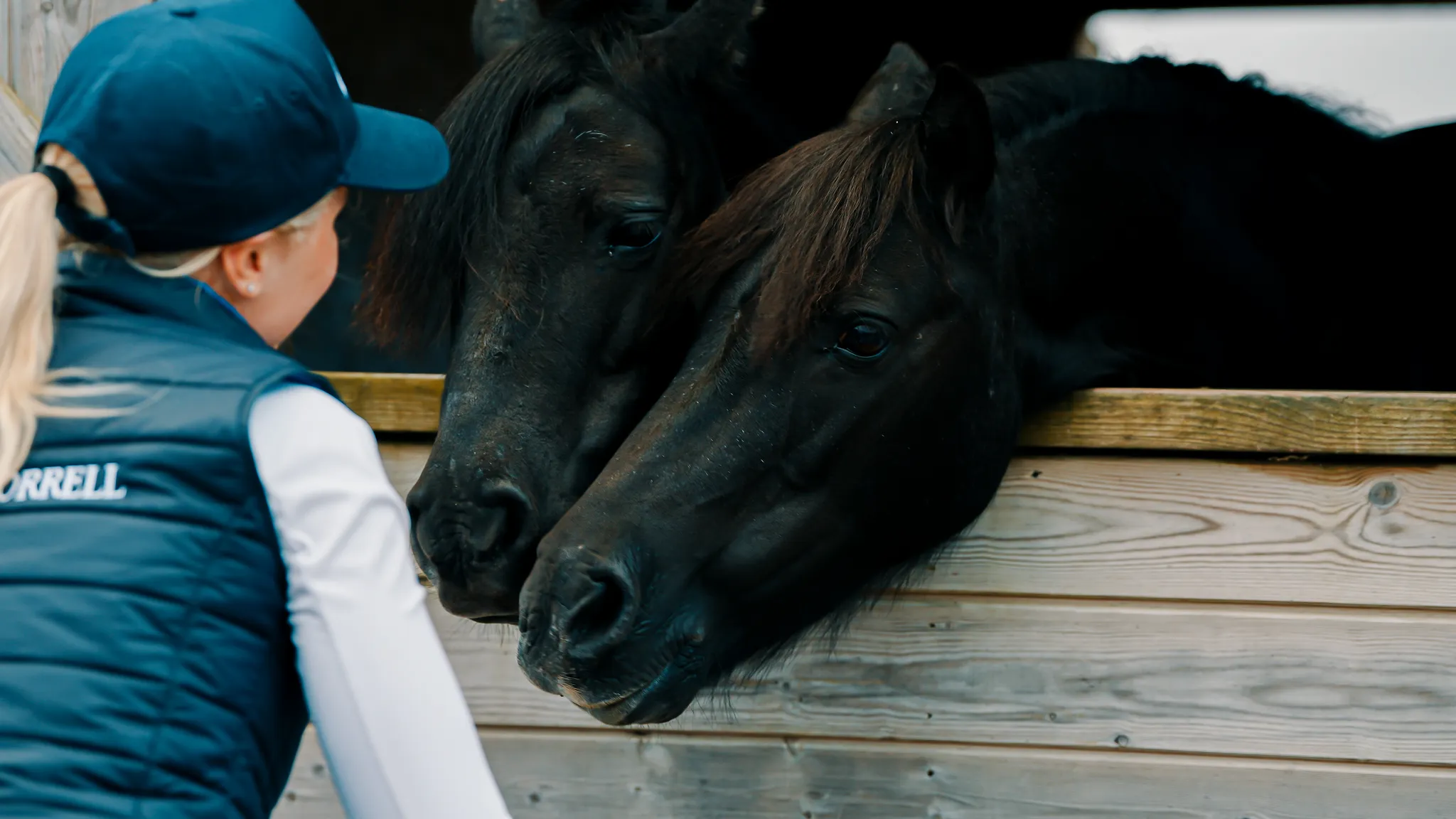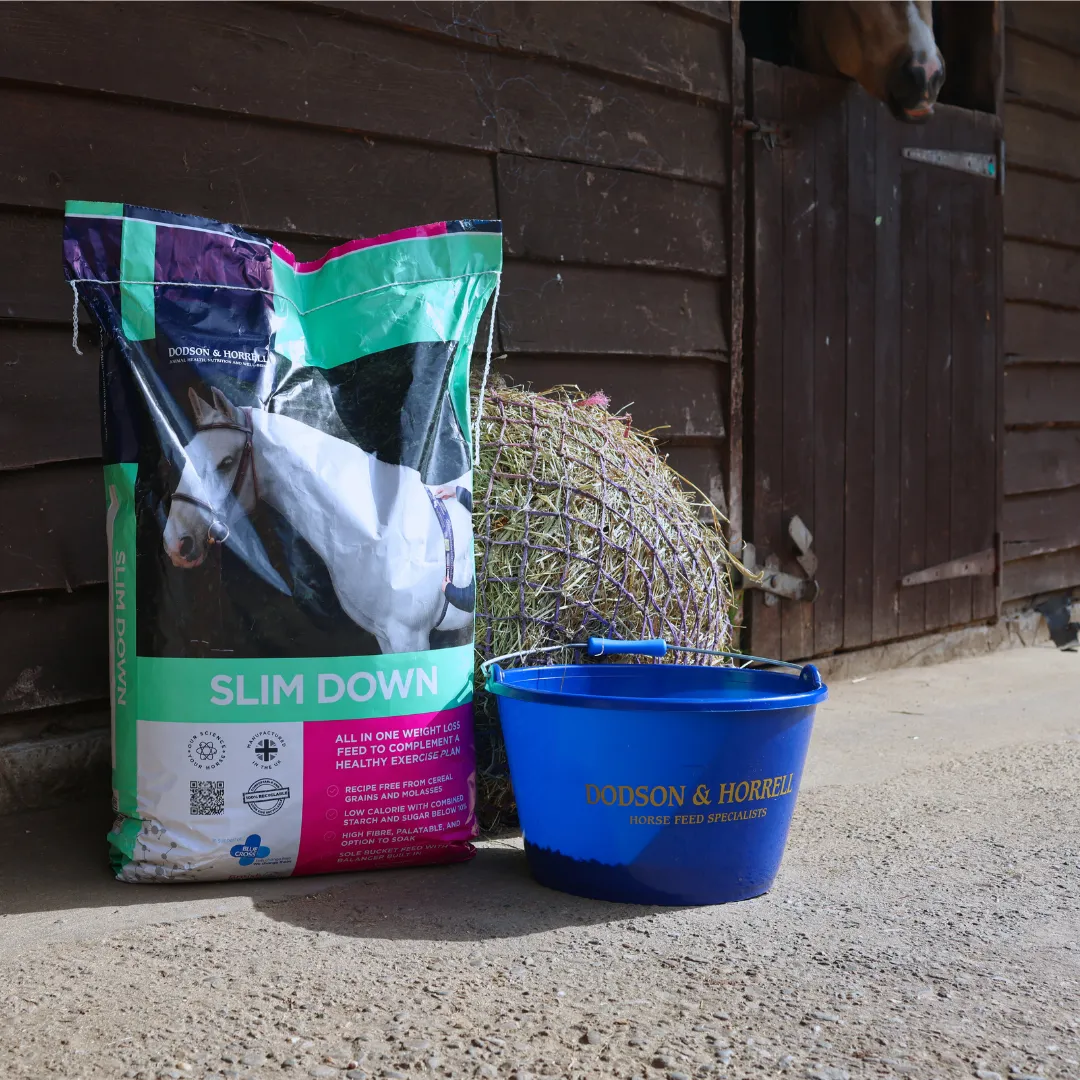News | 13 November 2024
Dodson & Horrell: What’s All the Fuss About Fibre?
Dr. Stephanie Wood
(Ph.D., PgDip., BSc (Hons), RNutr (Animal), R. Anim. Tech)
Head of Nutrition, Dodson & Horrell
Sponsors of the Dodson & Horrell Pony Club Quiz and Dodson & Horrell Badge
Dodson & Horrell’s Head of Nutrition, Dr. Stephanie Wood, shares why fibre is so important in your horse’s diet – especially as the weather gets colder.

What Exactly is Fibre?
Fibre is found in plants like grass, hay, and straw. It’s what gives plants their shape and structure, sort of like the skeleton in our bodies. When horses eat fibre-rich plants, they get nutrients that help them stay healthy and strong.
Why is Fibre Important?
When your horse munches on plants like hay, grass, or chaff, they’re not just eating – they’re feeding tiny “good bacteria” in their hindgut. These little helpers break down the fibre and release energy, vitamins, and heat. This heat helps keep horses warm, which is especially helpful in chilly weather!
Fibre and Chewing: Helping Your Horse’s Stomach Stay Healthy
Did you know horses make saliva only when they chew? Fibre makes them chew a lot, which means they produce more saliva. This helps keep their stomachs happy by balancing the acid that’s naturally there. Without enough fibre, horses might feel uncomfortable, kind of like when we get a tummy ache.

Different Sources of Fibre
There are lots of sources of fibre for horses! Grass, hay, haylage, chaff, and straw are the most common. Giving your horse a mix of these keeps their diet interesting and helps their hindgut bacteria stay balanced and healthy.
Even many horse feeds include extra fibre from ingredients like sugar beet, grass meal, and oat husks. At Dodson & Horrell, we use these to help support your horse’s digestive health and keep it working well.
How Much Fibre Does My Pony or Horse Need?
Horses need at least 1.5% of their body weight in fibre every day. That may sound complicated, but here’s how it works:

300kg pony example:
- A 300kg pony should eat a minimum of 4.5kg of fibre per day as dry matter
- If feeding hay that has a dry matter content of 86%, you should give 5.3kg of hay per day
- You need to feed more actual hay to account for the 14% water in the hay as water doesn’t contain any nutrients and dilutes those in the dry matter portion
- Feeding more compensates for that dilution
Calculations
300kg / 100 x 1.5 = 4.5kg of hay as DM
4.5 / 0.86 = 5.3kg of actual hay to account for water content of hay
550kg horse example:
- A 550kg horse should eat a minimum of 8.3kg of fibre per day as dry matter
- If feeding haylage that has a dry matter content of 70%, you should give 11.8kg of haylage per day
- As haylage contains more water the amount of actual haylage is much higher than the dry matter amount
Calculations
550kg / 100 x 1.5 = 8.3kg of haylage as DM
8.3 / 0.7 = 11.8kg of actual haylage